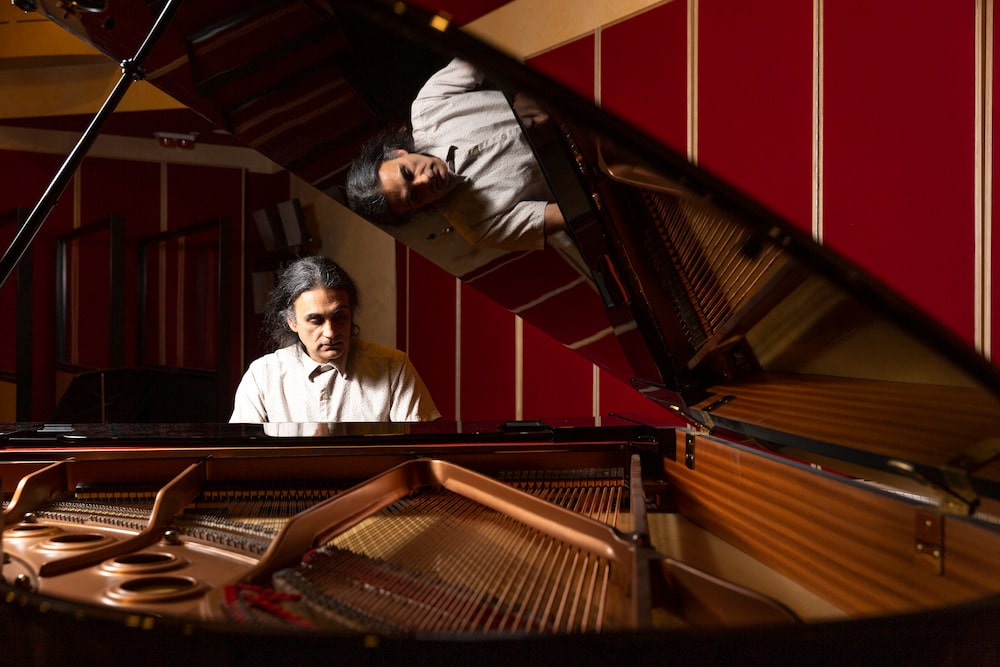The science on climate change is settled, composer Kim Cunio told the audience from the podium of the Llewellyn Hall on Saturday afternoon; now it was the task of the artists to win hearts and minds to save the planet. Then he turned to the Canberra Symphony Orchestra to direct his contribution to that task, the premiere performance of CO2 and the Ice Core.
Cunio’s work, written to a CSO commission, was the warmly received centrepiece of the orchestra’s The Elements concert, sponsored by the Canberra Daily. Listeners who are daunted at the prospect of hearing new music might find Cunio’s piece a revelation. If aspects of the work are unconventional, the whole is persuasive and powerful.
He employs a large orchestra, the musicians supplemented by “found sound” and electroacoustics — a transcription of CO2 leaving the ice core from sound provided by the British Antarctic Survey; a soundscape from Kolkata’s Durga Puja festival; a passage recorded at a coal processing plant in Orissa; and a segment with 16 soprano voices. All this is shaped around a framework of three orchestral movements threaded with concertmaster Kirsten Williams’s solo violin line.
It is a tribute to Cunio’s skilled craftsmanship that these disparate elements emerge as a coherent, unified work. In the auditorium, the effect is immediate, engaging and compelling. The temper of the work shifts as it develops, from surprise and apprehension, through an ominous party, to a lamentation that perhaps evolves to a guardedly optimistic conclusion. The CSO’s players rose to the challenge of having to respond during the “found sound” interludes — another indication of how good an ensemble the CSO has become.
The CSO played the rest of the program as a chamber ensemble, led by Kirsten Williams. Complementarity characterised the first part, water and air, with two works by British near-contemporaries: Grace Williams’s five Sea Sketches for string orchestra (1944), which evoke the ocean’s changeable moods, and Ralph Vaughan Williams’s The Lark Ascending (1914). Both pieces gave the CSO’s strings the chance to show their warm, disciplined tone. Kirsten Williams gave a poignant reading as the Lark “to silence nearer soars”. Her sensitive, perceptive contributions here and in other pieces were a notable feature of the concert.
The final “element” was “Fire” — Haydn’s Symphony No. 59, so nicknamed. Horns were to the fore in this delightful work from the middle of the composer’s symphonic output. Elegant and lively by turns, it brought the afternoon to a buoyant close after the imaginative intensity of Cunio’s offering.
— Peter Fuller
Read also:



